Today we shall have a very peaceful return to Ravnica.

Oracle Text:
Enchantment
When Rest in Peace enters the battlefield, exile all cards from all graveyards.
If a card or token would be put into a graveyard from anywhere, exile it instead.
Rest in Peace is a regular enchantment. When the Rest in Peace spell reolves, a new permanent enters the battlefield and remains there until an effect or game rule moves it to another zone.
Rest in Peace’s first ability is triggered, which is made clear by the word “When”. Its triggering event is Rest in Peace entering the battlefield, which may happen when the RIP spell resolves, as well as by an effect putting it directly onto the battlefield:
As Show and Tell resolves, we may put Rest in Peace onto the battlefield. Despite the fact that Rest in Peace was not cast, it has entered the battlefield, so its trigger goes off.
We may return RIP from our graveyard as Sun Titan’s trigger resolves, since its mana value is two. This will cause its trigger to go off.
After SBA are performed the trigger will go onto the stack. If it lives till its resolution (Disallow is lurking as you know), we get its effect: all cards from all graveyards are moved to the exile zone face up.
Some effects allow manipulating cards in exile, but if you handle linked abilities, keep in mind that they link not to any exiled card, but to the specific card moved there by the other linked ability.
As Detention Sphere’s second ability resolves, only cards that had been exiled with the effect of its first trigger return to the battlefield, not all cards you own in exile.
Rest in Peace' second ability is static. Many newbies take it for triggered and attempt to put it onto the stack. That’s wrong. Static abilities do not use the stack. Look closely at its text:
If a card or token would be put into a graveyard from anywhere, exile it instead.
It contains the word “if”, but no “when”, “whenever” or “at” which would signal a trigger.
However, the text contains another magical word, “instead”. This signals that the ability generates a replacement effect. This effect lasts as long as RIP is on the battlefield and has that ability. The effect “tracks” the upcoming event of “sending a card or token to the graveyard” and replaces it with “exile”. This means that not a single card or token actually enters the graveyard, they get exiled at once. Let’s see what happens to different cards in some situations.
As the last step of resolving a spell, its card is moved to the graveyard from the stack. But RIP’s ability effect instructs to exile it. If the spell has Flashback, you cannot use it, because the card never hits the graveyard at all.
If Golgari Grave-Troll appears in the graveyard somehow while Rest in Peace is on the battlefield (for instance, RIP’s abilities were somehow removed temporarily), then its owner may certainly dredge*, but all cards that he would put into the graveyard are instead exiled if RIP is effective again.
Sacrificed permanents are moved from the battlefield into the graveyard by definition. RIP’s ability effect replaces this event with exiling the permanent.
Same happens with destroyed permanents and with permanents that are supposed to be moved to the graveyard as SBA are performed.
If a card would be discarded, i.e. moved from the hand to the graveyard, this card is moved to the exile zone instead through the replacement effect of RIP’s ability.
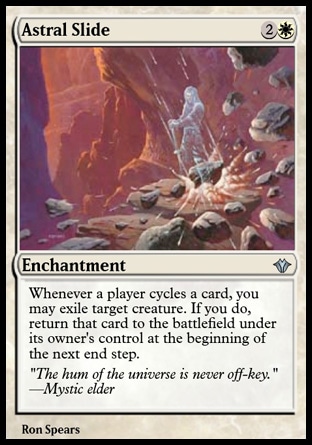
As part of the cost of activating the Cycling ability, the player must discard the card with Cycling.
Abilities that trigger when cards are cycled (such as Astral Slide) do trigger.
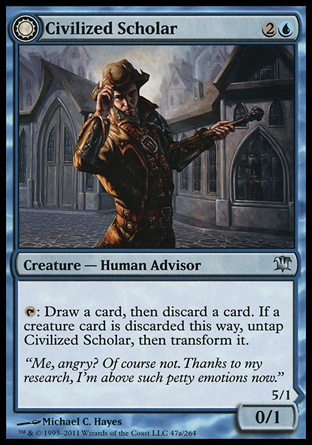
Since exile is an open zone and the card is exiled face up, all characteristics of the exiled card are known, so if a creature was exiled this way, we untap Civilized Scholar and transform it as if it were a normal discard.
Grindstone’s ability instructs to put two cards from target player’s library into his or her graveyard. Both of those cards will hit the exile. But Grindstone’s ability doesn’t check whether the cards hit the graveyard or not, it is only concrned with their color. Since we can determine that, if the colors match, the cycle will be repeated.
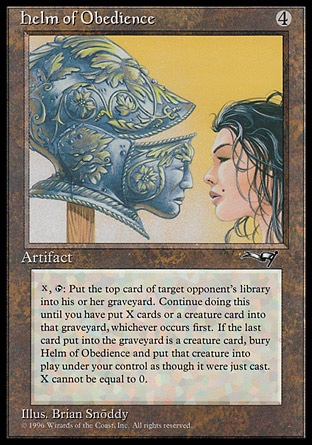
Helm of Obedience has the following activated ability:
{X}, {TAP} : Target opponent puts cards from the top of his or her library into his or her graveyard until a creature card or X cards are put into that graveyard this way, whichever comes first. If a creature card is put into that graveyard this way, sacrifice Helm of Obedience and put that card onto the battlefield under your control. X can’t be 0.
Since none of the cards actually reaches the graveyard due to RIP’s ability effect, the cycle only ends when the entire library is exiled. It isn’t hard to imagine what happens next: any attempt to draw from an empty library leads to game loss.
Since cards (and tokens) do not hit the graveyard, no triggers related to that event can go off. The triggering event simply does not take place.
Note that
A creature “dies” if it has been put into a graveyard from the battlefield.
That means that if RIP is on the battlefield, no creatures can die because they will be moved to Exile.
If Geralf’s Messenger has no +1/+1 counters, and would hit the graveyard from the battlefield, Undying doesn’t trigger due to Rest in Peace’s replacement effect.
Rancor becomes less exploitable with Rest in Peace in play, because it has very little chance to be put into a graveyard and have its trigger return it to its owner’s hand.

Don’t forget about triggers that go off when a permanent leaves the battlefield. Such triggers couldn’t care less where the permanent is heading. Such triggers will undoubtedly proc.
For instance, Angel of Serenity’s second trigger isn’t concerned with where the Angel is moved from the battlefield: to the graveyard, hand or exile. It will go off either way.
Avoid confusing triggers with static abilities. If an object falls under multiple replacement effects simultaneously, its controller (or owner, if it doesn’t have a controller) chooses the order in which to apply these effects:
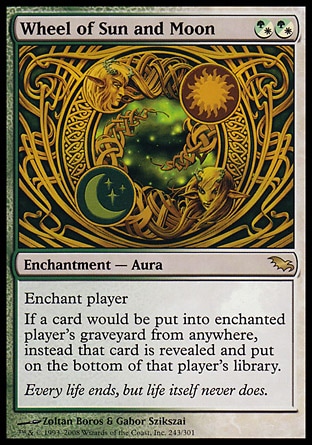
If Wheel of Sun and Moon is on the battlefield along with RIP, then cards and tokens under the enchanted player’s control that would go to the graveyard fall under two replacement effects. One wants to exile them, the other intends to put them on the bottom of their owner’s library. The player will choose which effect to apply first (and the only one, to be precise).
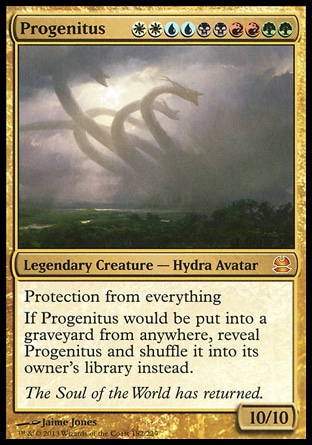
Progenitus has a static ability that generates a replacement effect (remember, we recognize it by the word “instead”). Its controller will choose the order to apply the replacement effects in, and something tells me he will choose to first apply the hydra avatar’s effect to shuffle it into the library instead of putting it into the graveyard. As a result, RIP’s effect will not apply.
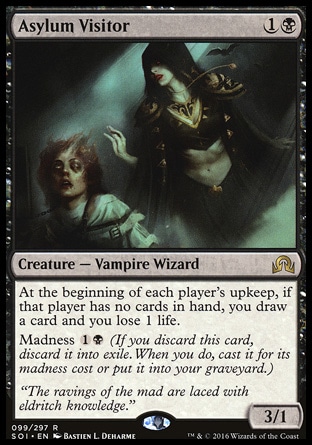
Asylum Visitor has the ability keyword Madness which among other things represents the static ability: «If a player would discard this card, that player exiles it instead of putting it into his or her graveyard». The player may choose to apply the Madness replacement effect first, and get a trigger that would allow him to cast that card from Exile (second ability of Madness).
The last thing we need to discuss is which cards go where when Rest in Peace is destroyed:
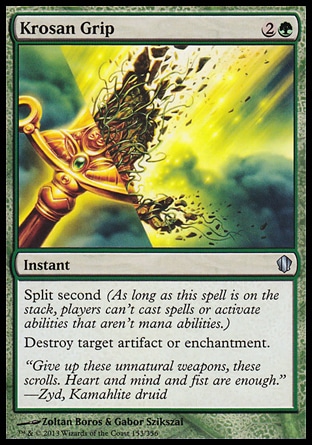
If your RIP gets destroyed by enemy Krosan Grip, first RIP is exiled through the replacement effect generated by its own static ability, then the Krosan Grip card is moved to its owner’s graveyard as the last step of resolution, because at that moment RIP is no longer on the battlefield, so its static ability no longer functions.

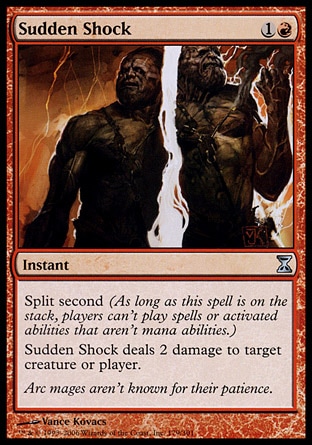
- ⇑ To mill is a slang expression meaning to “put a card from its owner’s library into his or her graveyard”.
- ⇑ Boros — combination of red and white colors. Owes its name to the namesake guild of Ravnica, the Boros Legion.
Translated by Witas Spasovski


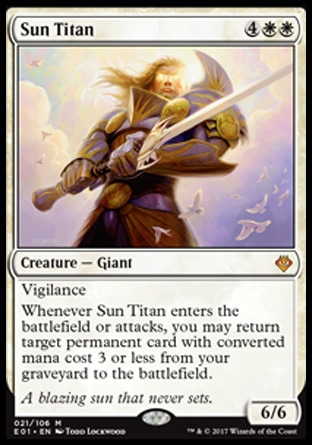


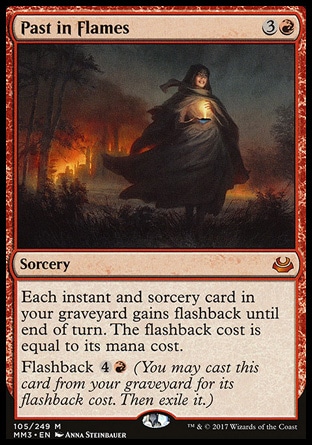
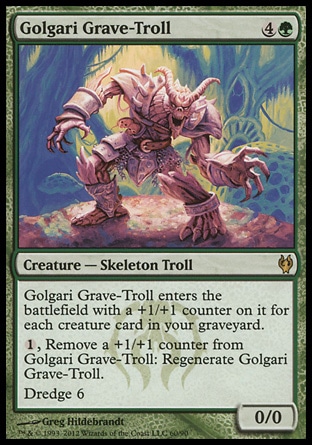
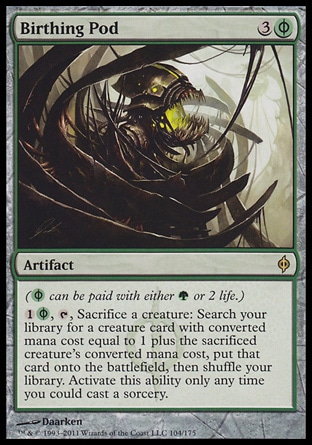
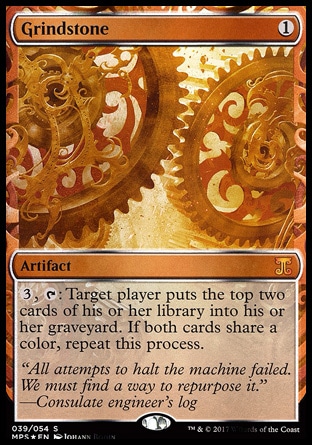
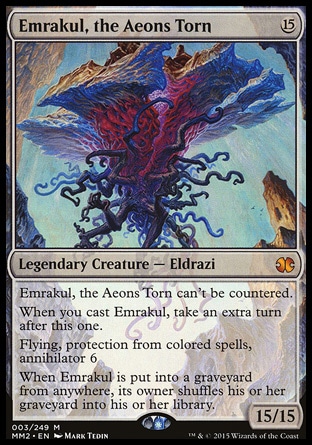

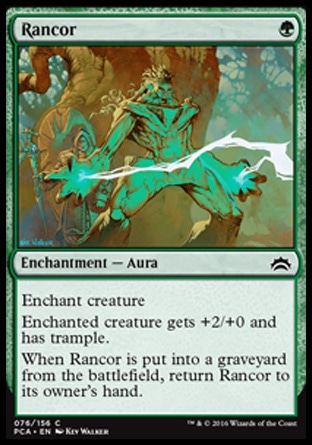
Suppose you control RIP and your opponent is a mad Boros acolyte and controls Opalescence.
Your RIP becomes a 2/2 creature (it doesn’t lose its abilities, and remains an enchantment at that). If the cunning opponent targets it with his Sudden Shock, then at its resolution RIP will first take 2 damage, then Sudden Shock will be exiled instead of going to the graveyard. Finally, SBA will be checked and the game will realize that RIP has lethal damage marked on it. As a result of performing the SBA, RIP will be exiled through the same replacement effect.